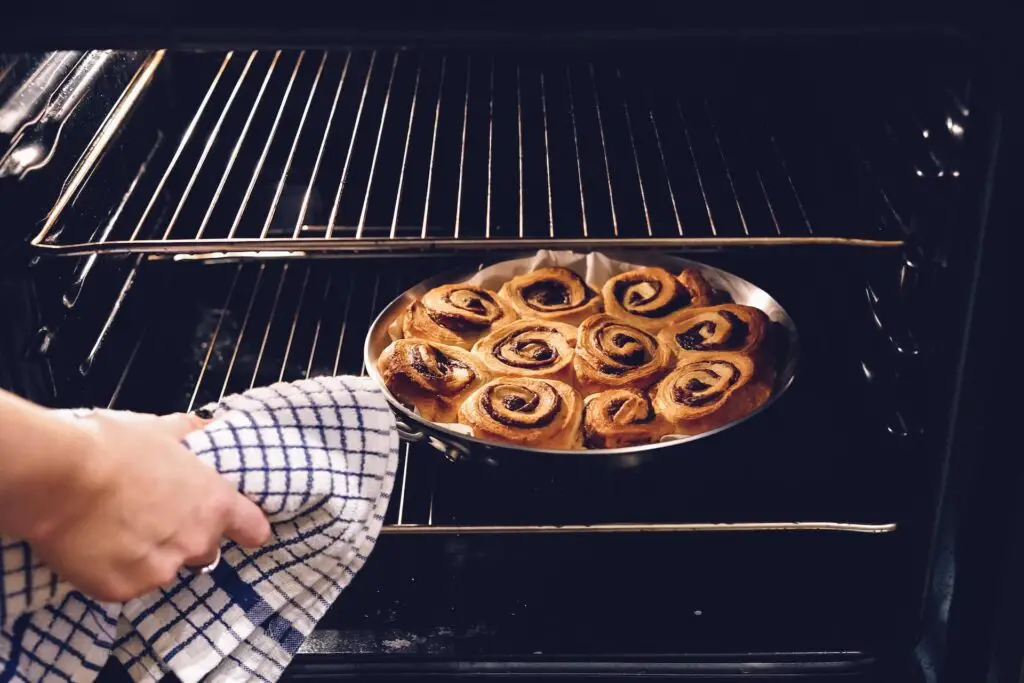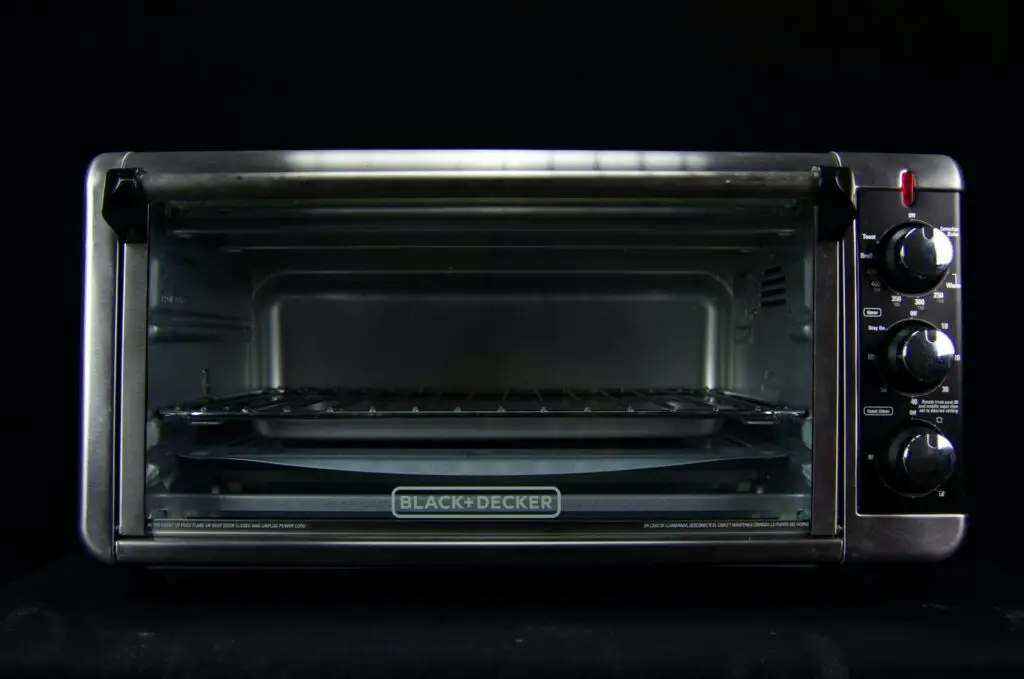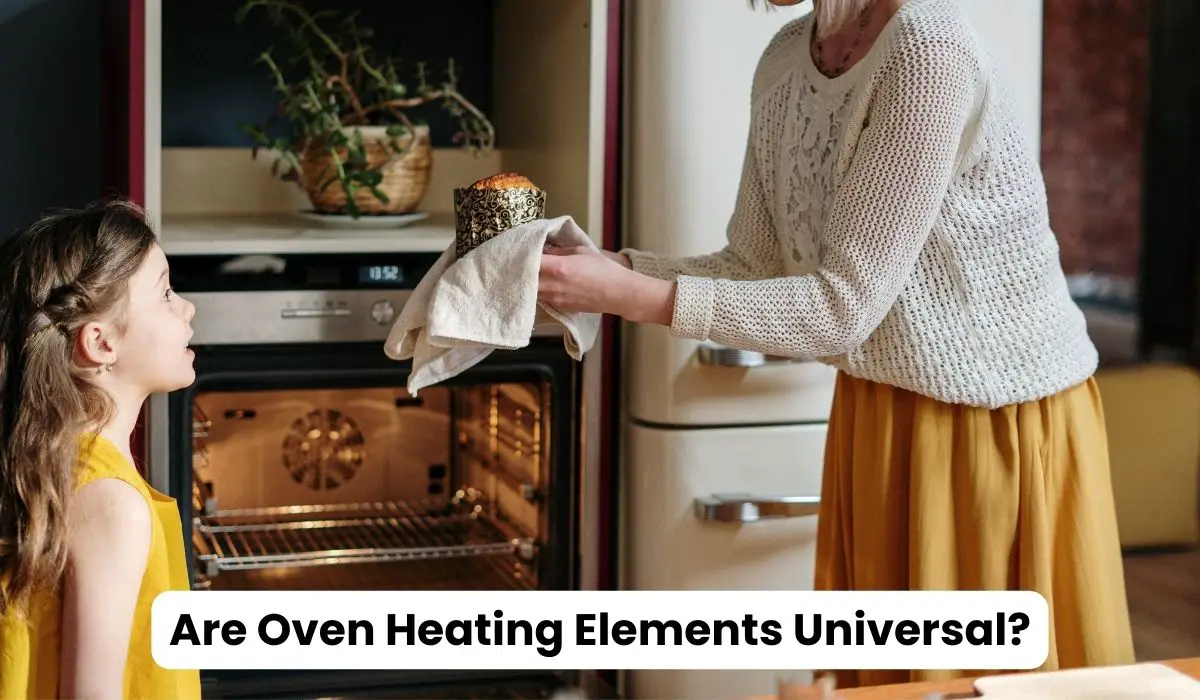In the world of kitchen appliances, ovens are an indispensable part of our daily cooking routines. Whether you’re baking your favourite cookies, roasting a succulent turkey, or simply reheating leftovers, the oven’s heating element plays a crucial role in ensuring your culinary creations come out perfectly.
However, have you ever wondered if oven-heating elements are universal? Can you replace one with another without any issues? In this article, we will delve into the fascinating world of oven-heating elements to answer these questions and more.
Are Oven Heating Elements Universal? No, all oven heating elements are not universal. They vary in size, shape, and wattage, depending on the oven’s make and model. It’s essential to replace a faulty element with the exact match recommended by the manufacturer to ensure proper fit and safe, efficient heating in your specific oven.
Table of Contents
What is an Oven Heating Element?

An oven heating element is a special part of your oven that plays a crucial role in making your favourite dishes turn from raw to cooked. It’s like the secret ingredient that makes baking cookies, roasting chicken, and cooking pizza possible.
How Does It Work?
Imagine the heating element as a superheated wire tucked inside your oven. When you tell your oven to cook something, this wire gets really, really hot, like a dragon’s fiery breath! It’s so hot that it can make your oven as toasty as a warm blanket on a chilly day.
This hot wire’s job is to heat up the air inside the oven. Just like a campfire spreads warmth around it, the heating element spreads heat all over the oven, creating the perfect cooking environment. This helps your food cook evenly and become delicious.
The heating element is like a silent helper that works behind the scenes to ensure your dishes come out just the way you want them. Whether you’re making a cake, some crispy fries, or a yummy casserole, the heating element is there to lend a hand.
Types of Oven Heating Elements:
1. Bake Elements
Bake elements are commonly used for most cooking tasks, providing even and consistent heat. They come in various shapes and sizes, and this diversity may lead to questions about their universality. Are bake elements universal?
Bake elements, which are primarily responsible for baking and roasting, often have specific dimensions tailored to the oven model. While there is some standardization, they are only partially universal. It’s essential to check your oven’s specifications and consult your appliance’s manual to ensure compatibility when replacing a bake element.
2. Broil Elements
Broil elements, on the other hand, are designed for broiling and browning dishes. They operate at higher temperatures, and like bake elements, they vary in size and shape. But are broil elements universal?
Broil elements, due to their specialized function and high-temperature operation, are less likely to be universal. Similar to bake elements, broil elements may have unique sizes and shapes. Replacing a broil element should be done with caution and based on your oven’s specific requirements.
Are Oven Heating Elements Universal?

Now, let’s dive into the fascinating world of oven-heating elements and explore the question – Are oven-heating elements universal?
Think of oven-heating elements as the special tools that help turn your oven into a cooking powerhouse. They’re like the secret chefs of the kitchen, working behind the scenes to make sure your meals come out perfectly. But are they the same in every oven? Well, not quite.
Ovens, just like people, come in all sorts of shapes and sizes. Some are big, some are small, and they can have different features and cooking styles. This means that the heating elements inside them can be quite different too.
Imagine you have a puzzle, and each oven has its unique piece that fits just right. Some ovens have round heating elements at the top and bottom, which are like big, curly springs. Others have hidden heating elements beneath the oven floor, and some even have multiple heating elements for super-even cooking.
So, to answer the big question, oven heating elements are not exactly universal. They’re more like special keys that match specific ovens. If you need to replace a heating element, you’ll have to find the one that’s made to fit your oven’s brand and model. It’s like finding the right-sized shoe for your foot – one size doesn’t fit all.
But don’t worry! If you need help deciding which heating element to get, you can check your oven’s manual or look up the model number to find the perfect match. That way, your oven will continue to cook your delicious meals just the way you like them.
In summary, oven heating elements are like the unique tools in your kitchen that make your oven work its magic. While they might not be universal, they are like puzzle pieces that fit perfectly with specific ovens. So, the next time you need to replace one, just remember to find the right match, and your oven will keep cooking delightful dishes for you.
Finding the Correct Oven Heating Element:

In our quest to understand whether oven-heating elements are universal, we’ve stumbled upon an important task – finding the correct oven-heating element. Just like finding the right key for your door, getting the right heating element for your oven is vital to keep your cooking adventures going smoothly.
As we’ve learned, oven heating elements aren’t one-size-fits-all. They vary from oven to oven, so when it’s time to replace one, you’ll need to make sure you have the right match. Here’s how to go about it:
1. Know Your Oven’s Brand and Model
The first step is to identify your oven’s brand and model. This information is usually found on a label inside the oven door or in the user manual. Knowing the brand and model is like knowing your oven’s name, and it’s your first clue to finding the correct heating element.
2. Measure the Dimensions
Next, you’ll need to measure the dimensions of your current heating element. This includes its length, width, and any special shapes. Just like finding clothes that fit, measuring your heating element ensures the replacement will be the right size for your oven.
3. Check the Type
Determine the type of heating element your oven uses. Is it a top or bottom element? Or is it hidden beneath the oven floor? Some ovens have multiple elements. This information is like understanding the special language your oven speaks.
4. Consult the Manual or Manufacturer
If you still need to decide which heating element to get, refer to your oven’s manual. It might have specific recommendations for replacement parts. You can also contact the oven’s manufacturer or visit their website for guidance. It’s like asking for directions when you’re lost.
5. Shop for the Right Element
Once you have all this information, it’s time to go shopping. You can visit a local appliance store or shop online. Make sure to specify your oven’s brand, model, and the type of heating element you need. It’s like picking the right jigsaw piece for your puzzle.
6. Installation
When you have the new heating element, follow the manufacturer’s instructions for installation. It’s like putting together a LEGO set – just follow the steps, and your oven will be back in action.
Finding the correct oven heating element is like a little detective mission. By knowing your oven’s brand, model, dimensions, and type of heating element, you’ll be on your way to a successful replacement. While oven heating elements may not be universal, with the right match, your oven will continue to cook up delicious meals just the way you like them. So, go ahead, get your oven back in tip-top shape, and keep those culinary adventures alive.
Is the Cost of an Oven Heating Element High?

The cost of an oven heating element can be a bit like buying different toys – it varies. Whether it’s high or not depends on a few things.
First, it depends on the type of oven you have. Some ovens use regular heating elements, and those are usually less expensive to replace. But if you have a fancy oven with special features, the heating element might cost more. It’s a bit like how a simple toy is usually cheaper than a fancy remote-controlled robot toy.
The brand and model of your oven also matter. Just like some clothes or shoes cost more because of the brand, oven heating elements can be affected by the brand and model of your oven. Some brands have cheaper replacement parts, while others can be a bit pricier.
The quality and materials of the heating element play a role too. Suppose the heating element is made with better materials and is of higher quality. In that case, it might last longer and work better. But this can also make it more expensive. It’s a bit like choosing between a plastic toy and a sturdy metal one – the metal toy might cost more, but it’s built to last.
Whether you install it yourself or have a professional do it can also change the cost. Installing it yourself can save money, but you need to know what you’re doing. Having a pro install it might cost extra, but it ensures that it’s done right.
Some heating elements come with warranties or guarantees. These can make the cost a bit higher, but they give you peace of mind because you know you’re covered if anything goes wrong.
Also Read: 5 Minutes In Microwave Is How Long In Oven?
How Can You Change the Heating Elements of Your Oven?
Changing the heating elements in your oven might sound like a tricky task, but don’t worry; it’s a bit like putting together a simple puzzle. Just follow these steps, and you’ll have your oven working like new in no time!
1. Safety First
Always ensure your oven is unplugged or turned off at the circuit breaker before starting. You don’t want any surprises while you’re working.
2. Gather Your Tools
You’ll need a few tools like a screwdriver, pliers, and maybe some gloves for safety. Think of them as your superhero gear for this adventure.
3. Identify the Elements
Find out which heating element you need to replace – the bake element at the bottom or the broil element at the top. Each might have its method of removal.
4. Remove the Old Element
Usually, you’ll need to unscrew a few screws that hold the element in place. Once you’ve done that, gently pull the old element out. Be careful; it can be a bit like taking out a puzzle piece.
5. Disconnect the Wires
Now, there will be some wires connected to the element. Use your pliers to disconnect them. Remember where each wire goes because you’ll need to connect them the same way to the new element.
6. Install the New Element
Take your new heating element and attach the wires to it, just like the old one. Then, gently slide it into place and secure it with the screws. It’s like putting the final piece in your puzzle.
7. Test It Out
Before you celebrate, plug your oven back in or turn on the circuit breaker. Please turn on the oven and set it to a low temperature. Check if the new element heats up. If it does, you’ve successfully changed your heating element! If not, double-check your connections and try again.
8. Enjoy Your Fixed Oven
Once your oven heats up as it should, you can start cooking your favourite meals again. It’s like having your trusty sidekick back in action.
Remember, if this seems too complicated, or you need to be more comfortable doing it yourself, it’s always a good idea to call in a professional. They can make sure everything is done correctly, just like a superhero saving the day.
Changing the heating elements in your oven might not make them universal. Still, it can certainly make your oven work like new. So, put on your DIY cape, follow these steps, and soon, you’ll be baking, roasting, and cooking up a storm again.
Conclusion:
While oven heating elements may be somewhat universal, understanding their compatibility with your specific appliance is crucial. Refer to your oven’s manual, measure the dimensions, and consider brand compatibility when replacing these essential components. By following these guidelines, you can ensure your oven continues to serve you delicious meals for years to come.
Refrain from letting a faulty heating element ruin your culinary endeavours. With the right knowledge and a bit of research, you can keep your oven in top working condition.
FAQs
Are heating elements easy to replace?
Replacing heating elements can be straightforward if you have the right tools and follow safety precautions. However, if you’re uncertain, it’s best to consult a professional technician.
Can a faulty heating element affect my cooking results?
Absolutely. A malfunctioning heating element can lead to uneven cooking and longer cooking times.
Are universal heating elements available for ovens?
Some universal elements may fit a range of ovens, but it’s essential to double-check their compatibility with your specific appliance.
How often should I replace my oven’s heating elements?
The lifespan of heating elements varies, but they typically last several years. Regular maintenance and cleaning can extend their longevity.



